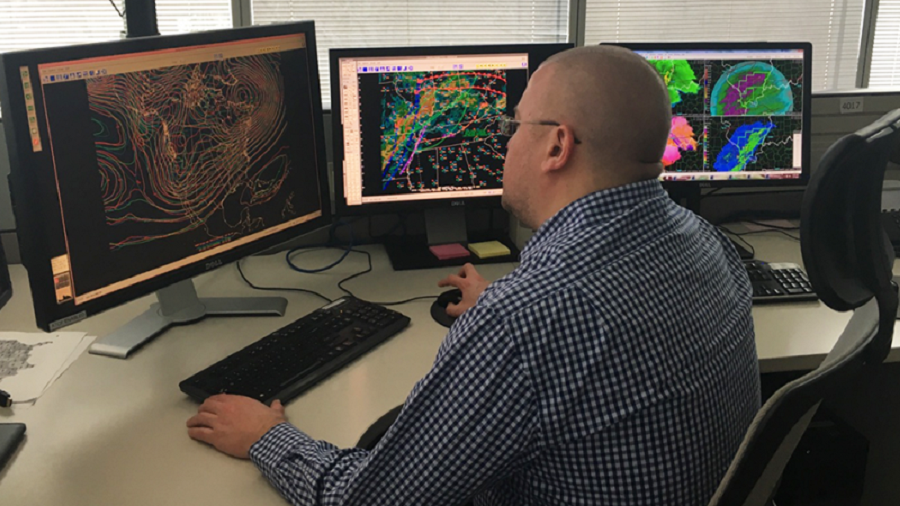
NOAA unveiled today an improved global forecast model which will boost the quality of weather forecasts across the United States. The Global Forecast System (GFS) is undergoing a significant upgrade today to include a new dynamical core called the Finite-Volume Cubed-Sphere (FV3). This upgrade will drive global numerical weather prediction into the future with improved forecasts of severe weather, winter storms, and tropical cyclone intensity and track. The unveiling of the FV3-based GFS marks the first major upgrade in more than 30 years to America’s premiere global forecast model.
Brian Gross, Ph.D., Director, NOAA’s Environmental Modeling Center, tells us that this new model will take advantage of new data arriving from America’s latest weather satellites , like GOES-R and NOAA-20, and from the soon-to-be-launched COSMIC-2 constellation. According to Dr. Gross, the new GFS will “incorporate new streams of data all the time, ingesting new data from new streams.”
NOAA research scientists originally developed the FV3 as a tool to predict long-range weather patterns at time frames ranging from multiple decades to interannual, seasonal and subseasonal. In recent years, creators of the FV3 at NOAA’s Geophysical Fluid Dynamics Laboratory expanded it to also become the engine for NOAA’s next-generation operational GFS. “In the past few years, NOAA has made several significant technological leaps into the future – from new satellites in orbit to this latest weather model upgrade,” said Secretary of Commerce Wilbur Ross. “Through the use of this advanced model, the dedicated scientists, forecasters, and staff at NOAA will remain ever-alert for any threat to American lives and property.”
The FV3-based GFS brings together the superior dynamics of global climate modeling with day-to-day reliability and speed of operational numerical weather prediction. Additional enhancements to the science that produce rain and snow in the GFS also contribute to the improved forecasting capability of this upgrade. In testing prior to its launch, the FV3-based GFS provided forecast insight in the track and intensity of tropical cyclones, such as tropical storms and hurricanes, far better than any other computer forecast model there is.
“We are excited about the advancements enabled by the new GFS dynamical core and its prospects for the future,” said Louis W. Uccellini, Ph.D., director, NOAA’s National Weather Service. “Switching out the dynamical core will have significant impact on our ability to make more accurate 1-2 day forecasts and increase the level of accuracy for our 3-7 day forecasts. However, our job doesn’t end there — we also have to improve the physics as well as the data assimilation system used to ingest data and initialize the model.” Uccellini explained that NOAA’s effort to build a common infrastructure between the operational and research communities will help advance the FV3-based GFS beyond changing the core. “This new dynamical core and our work with NCAR will accelerate the transition of research advances into operations to produce even more accurate forecasts in the future,” added Uccellini.
The retiring version of the model will no longer be used in operations but will continue to run in parallel through September 2019 to provide model users with data access and additional time to compare performance.